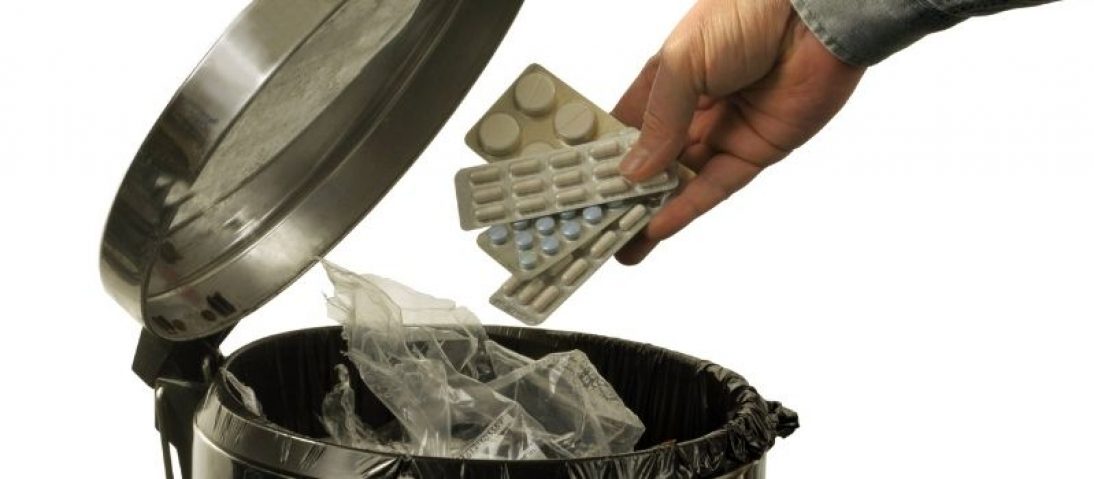When someone has leftover prescription medications that can be addictive, this signifies a high risk of misuse. Often, people will continue to use their prescription despite no longer needing it. Also, children and teenagers might have access to addictive substances at home that they’ll take for experimentation. In fact, many kids first start using drugs from their parent’s medicine cabinets. Learning the right way to dispose of medication keeps everyone safe.
When Should You Dispose of Medication?
Ideally, you should dispose of medication by the time it expires, is unwanted, or unused. When anyone no longer needs a prescription like pain medication or sleep medication, it should immediately be disposed of. Most over-the-counter and prescription drugs can be disposed of at a home or a pharmacy. Always check for the expiration date of all your medications, even over-the-counter ones. Expired medication can cause side effects and other health problems. However, if you have illegal drugs or controlled substances, there are federal programs to help you. The Drug Enforcement Administration (DEA) sponsors National Prescription Drug Take Back Day in communities nationwide. These programs allow people to return illegal or controlled substances with no questions asked. The idea is to help people get rid of these drugs and take them away from their homes. The DEA places collection sites on hundreds of thousands of communities nationwide and align with other law enforcement agencies to promote properly disposing of medication.
Disposing of Medication at Pharmacies
Different pharmacies, including CVS and Walgreens, have nationwide drug take-back programs to help people dispose of unwanted medications. Some programs allow patients to mail their unwanted medications or place them in medication disposal kiosks to leave medicine. Then, pharmacies will incinerate these medications to guarantee they won’t be misused or accidentally used by anyone. Check online to see where there’s a disposal location near you.
How to Dispose of Medication at Home
Another option is to dispose of medications at home. The Food and Drug Administration (FDA) recommends the MPTS method: mix, place, throw and scratch out. This method will significantly reduce the likelihood that your unwanted medication will be misused by someone else. Don’t just throw medication on your household trash. Follow this method to safely dispose of medicine:
- Mix: Pour the medication into a disposable bowl and mix it with an inedible substance like compost.
- Place: Scoop the mix into a sealable plastic bag.
- Throw: Seal the plastic bag and throw it in the garbage.
- Scratch out: On the prescription bottle, use a dark pen to identify characteristics like your name, the type of medication, and any other information on the label.
List of Medications That Can Be Flushed
If you choose to dispose of medications at home, the other method is to flush them down the toilet. To do this, verify the FDA’s Flush List to ensure this is a safe method of disposing of your medications. Here’s a list of medicines recommended for disposal by flushing:
- Acetaminophen
- Buprenorphine
- Diazepam
- Fentanyl
- Hydrocodone
- Hydromorphone
- Meperidine
- Methadone
- Methylphenidate
- Morphine
- Oxycodone
- Oxymorphone
- Sodium Oxybate
- Tapentadol
Most of these medications are on the FDA’s Flush List because they are often misused and can be fatal even after a single dose.
How to Dispose of Prescription Pill Bottles at Home
You’ll be surprised to learn that your prescription pill bottles can be reused to obtain drugs. Regardless of the method, you choose to dispose of medication. You also need to dispose of your prescription container properly. Those who misuse drugs might find the pill bottles and target your home to get more drugs. Before discarding a prescription pill bottle, you should scratch out any personal information. Use a dark market to cover the medication, the name, the pharmacy, and the prescription number. Another method is to remove the sticker label altogether. If you do this, check with your municipality to see if you can recycle those bottles. Your local pharmacy might also have a recycling program for pill bottles; check with them before tossing the empty bottle.
What Should I Do With Prescription Drug Receipts?
Protect your privacy even further by taking the same care with your prescription drug receipt. Try to destroy any personal receipts or any paperwork that comes with your medications. You can shred it, blackout any sensitive information with a marker. It might seem like too much of a hassle to do all of these steps. But it doesn’t hurt to be safe. The CDC estimates that at least 46 people die every day from prescription opioid misuses, and over 65,000 children under the age of four were admitted to emergency departments after medication exposure. By taking these extra steps, you could be saving lives, you’re protecting your children and pets, and protecting yourself as well.





